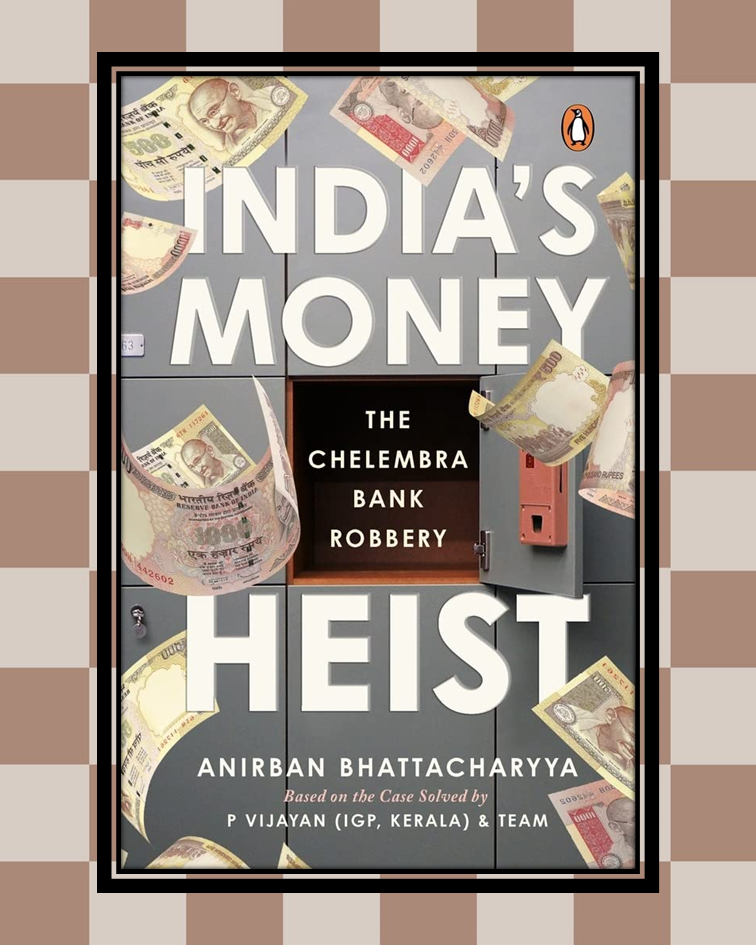Sameer Gudhate Presents the Book Review of India’s Money Heist: The Chelembra Bank Robbery by Anirban Bhattacharyya
- Sameer Gudhate
- Sep 30
- 4 min read

When you think of crime stories, your mind might immediately drift to gritty fictional thrillers or TV shows where detectives solve cases with cinematic flair. But India’s Money Heist: The Chelembra Bank Robbery by Anirban Bhattacharyya occupies a fascinating space that is both rooted in reality and as riveting as fiction. Its genre is true crime, a category that celebrates fact-based storytelling while keeping readers on the edge of their seats, and yet it does so in a manner that feels intimate, personal, and immersive.
True crime, at its core, is the art of narrating real-life criminal events, blending factual reporting with narrative techniques that draw readers into the story. What Bhattacharyya accomplishes here is a masterclass in that craft. He doesn’t just retell the robbery of Chelembra’s bank on 31st December 2007; he reconstructs it in a way that makes you feel the tension, the stakes, and the human emotions intertwined with each step of the crime and its investigation. This duality—the meticulous planning by the criminal mastermind and the strategic pursuit by the police—anchors the book squarely in the true crime genre while giving it a cinematic thrill that could easily be mistaken for fiction.
Unlike conventional crime reporting or academic case studies, this book employs narrative techniques characteristic of crime thrillers, including tension-building, cliffhangers at chapter ends, and vivid character sketches. Yet, every detail is firmly grounded in reality. Extensive interviews with police officers, first-person confessions from the criminals, and deep dives into police records give the story authenticity and weight. This careful balance between research-backed facts and narrative flair is precisely what elevates it beyond a simple recounting of events, positioning it as a hybrid between non-fiction, investigative journalism, and suspenseful thriller.
The genre is also defined by its perspective, and Bhattacharyya’s approach is particularly notable. He explores both sides of the law—the mastermind Babu’s meticulous, audacious planning and the Kerala police team’s strategic, patient efforts to track him down. This dual-perspective storytelling is a hallmark of sophisticated true crime writing. It allows readers not only to witness the mechanics of a high-stakes bank robbery but also to delve into human psychology, understanding motivations, fears, and moral dilemmas. In this sense, the book transcends mere criminal recounting and becomes a study of character, ethics, and the delicate balance between risk and reward.
Additionally, the book exhibits qualities of crime non-fiction with a thriller edge. The pacing is deliberate, with Bhattacharyya ensuring moments of tension are punctuated by humanizing details—a nervous glance, a calculated risk, the thrill of pursuit. These narrative choices align the work with suspense and thriller genres, but the grounding in real events keeps it unmistakably true crime. Readers are not simply following a plot invented for entertainment; they are engaging with the lived experiences of both the law enforcers and the criminals involved.
What makes India’s Money Heist even more compelling within its genre is its cultural specificity. Set in Kerala, it subtly incorporates local dialects, customs, and societal context, which adds a layer of authenticity that is often missing in generic crime narratives. This rooting in real-life geography and society is another hallmark of true crime: it’s not just about what happened but also where, how, and why it happened in a particular time and place. For readers, this creates a sensory, immersive experience—almost like visiting the town of Chelembra itself, hearing the local sounds, and feeling the charged energy of a community rocked by a spectacular crime.
Furthermore, the book’s genre thrives on meticulous research and fact-checking, and Bhattacharyya’s dedication to these elements is evident on every page. The careful recounting of police procedures, the step-by-step planning of the heist, and the unraveling of the investigation are what make the work credible. True crime demands rigor, and the author’s commitment to accuracy ensures that readers can trust the narrative even as they are swept up in the suspense.
In essence, India’s Money Heist exemplifies the best of true crime while flirting seamlessly with the edge-of-the-seat excitement of a thriller. It satisfies readers who crave authentic crime stories, those who delight in psychological and strategic insights, and even those who appreciate the dramatic tension of well-crafted fiction. The book’s genre is thus not merely a label; it’s a multi-layered experience—a blend of factual storytelling, psychological exploration, suspense, and cultural texture that makes it irresistible.
For anyone curious about real-life criminal minds, law enforcement strategy, or the anatomy of a high-stakes heist, this book is a shining example of true crime done right. It is immersive, meticulously researched, and emotionally resonant, offering insights into human ambition, risk, and morality. Anirban Bhattacharyya has not only recounted a spectacular robbery but has crafted a work that will remain a reference point in Indian true crime literature, a must-read for anyone who loves to see the dance between law and audacity played out in vivid, real-life detail.
#IndiasMoneyHeist #ChelembraBankRobbery #TrueCrimeIndia #IndianTrueCrime #CrimeNonFiction #BankHeistStory #AnirbanBhattacharyya #ThrillerBooks #TrueCrimeStories #CrimeLovers #IndianCrimeStories #PageTurnerBooks #MustReadBooks #RealLifeCrime #CrimeBookCommunity #ThrillerReaders #MysteryAndCrime #HeistStory #CrimeInvestigation #KeralaCrime #PoliceVsCriminals #CrimeThrillerBooks #TrueCrimeAddict #BookRecommendations #IndianAuthors #TopCrimeBooks #NonFictionThriller #CriminalMind #TrueCrimeAddicts #BookstagramIndia #BookLoversIndia #sameergudhate #thebookreviewman







Comments